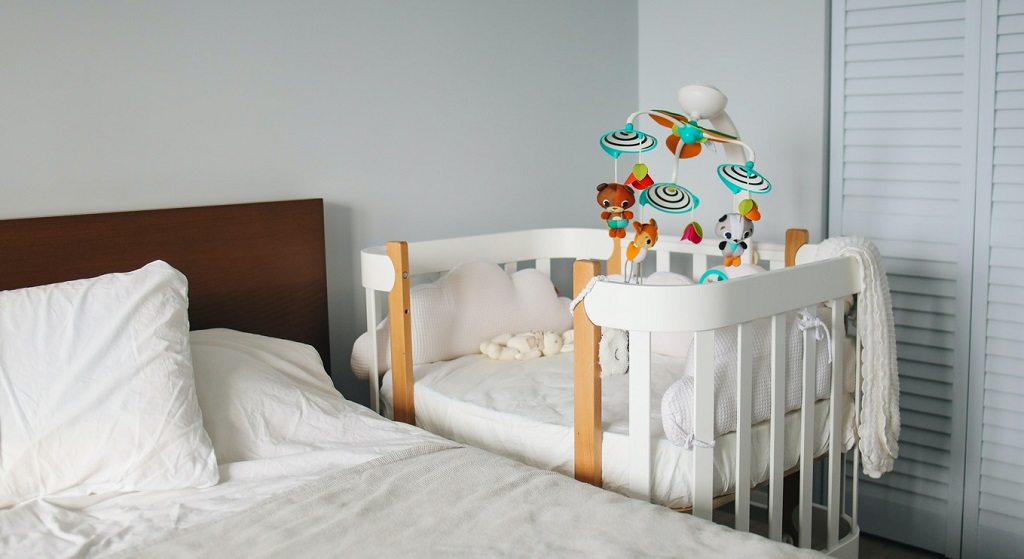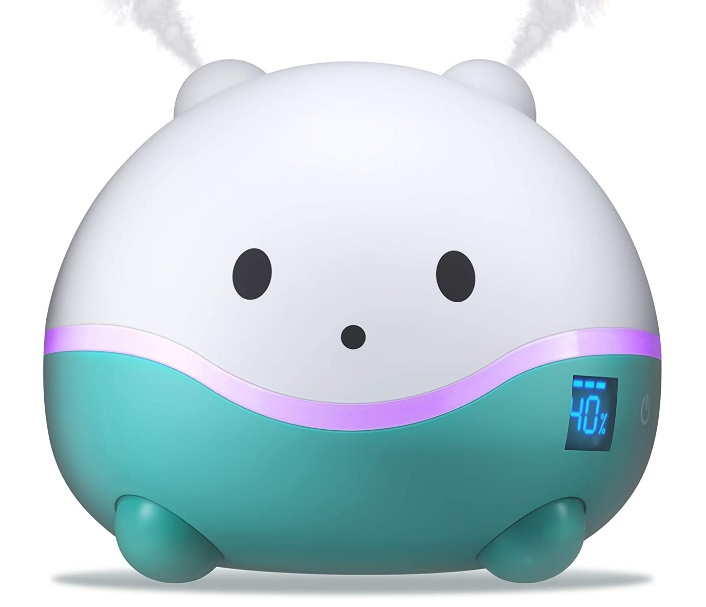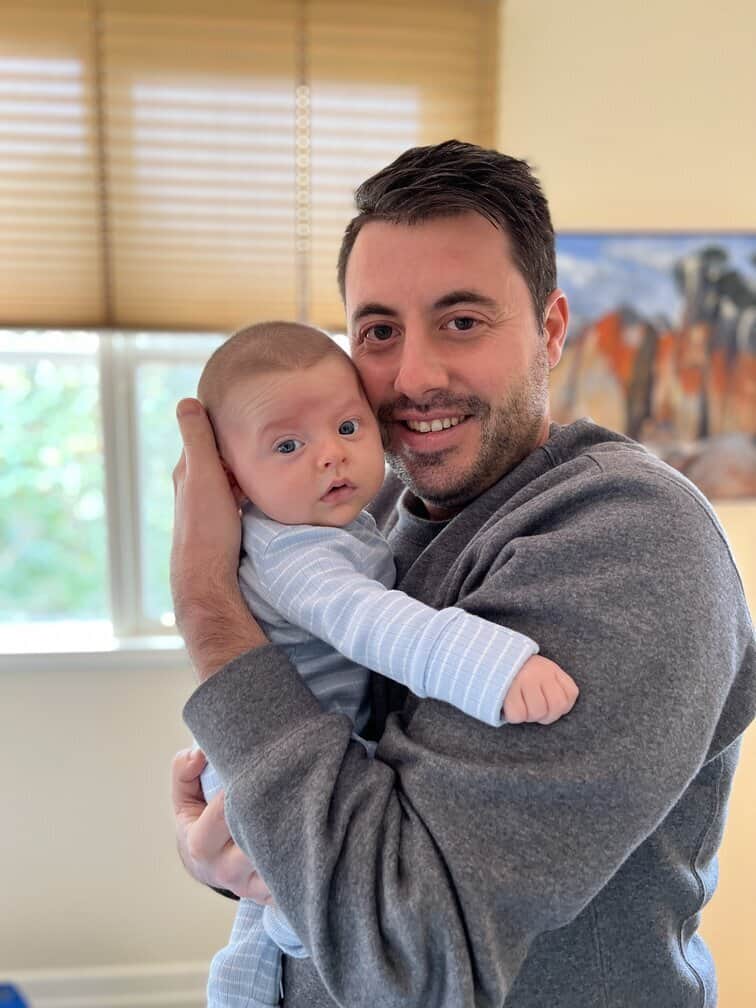When you have a tiny baby, their sleep can easily become the number one topic in your household. After all, practically everything else depends on it: your daily activities, time for work, space for yourself, and also the happiness and wellbeing of the baby.
But finding a sleep routine that works is not easy, as I have realized myself during the first months of our little boy’s life. Fortunately, after dozens of sleepless nights and fuzzy mornings, we finally found a set of reliable tips that helped.
Today, I want to share with you 3 month old sleep schedule ideas and tips that saved our lives (or at least sanity).
But first, let’s start with a brief introduction to children’s sleep in general because many mistakes and disappointments apparently arise from its complete misunderstanding.
How much sleep does your 3-month-old baby need?
When I became a father, I was incredibly excited about all those new experiences and activities we would do as a family. I’ve imagined all the cuddles, laughs, and wide-eyed gazes… I was head over heels in love with the idea of spending as much time as possible with my baby boy.
Then the reality hit me. My kid had a very different idea of what he wanted to do during his first months of life: All he truly wanted was to eat and sleep. Needless to say, my plans had to be postponed for later.
Still, I couldn’t stop wondering: Does he have to sleep most of his day?! How much sleep does such a small child need, and why cannot they simply sleep at night like we adults?
Well, according to the National Institutes of Health, a 3-month-old should sleep about 17 hours a day, which is more than double the time adults should sleep.
Moreover, you cannot expect them to spend the remaining time awake at once – sleep periods are divided into shorter blocks during the day and night, and the time the baby spends actively is therefore also fragmented.
Yes, your daily schedule will be turned upside-down! The good news is that around the 3rd month, your baby is starting to realize that days and nights are not the same. Their sleep periods will prolong during the night, and activity will be focused in the daytime. Don’t give up yet; it will be better soon.
Do you need to get your 3-month-old on a sleep schedule?

We people have learned to name, grasp, and try to resolve every issue as soon as possible. No wonder most of us proactively try to solve the “problem” of our babies’ sleep using some fixed sleep regime. But is it possible, and isn’t it even harmful at such a young age?
As I discovered through my research, the experts do not recommend forcing any rigid sleep training on kids younger than 5 or 6 months – it is just too soon, and it, most likely, won’t even have the effect you’re hoping for.
That being said, there are still quite a few useful things you can do already to lay down proper foundations for your little one’s healthy sleep schedule in the future.
Read also: 6 Month Old Sleep Schedule Ideas.
Sleep schedule ideas to improve your 3-month-old’s sleep
Even though you cannot teach your 3-month-old yet to follow an exact sleep schedule day after day (and, more importantly, night after night), there are numerous things you can do to get them on the right track and improve their sleeping routine.
On the Internet and in literature, you can find many “guaranteed tips” on this topic, but from my experience, many are far from universal and rarely work. However, the following tips have actually worked for me in practice, so I believe you could find them helpful too:
1. Make your daily routine consistent
Even though you should not enforce any rigid sleep schedule yet, a consistent daily routine will help set your baby’s “inner clock” and prepare them for what it will be like once they’re a bit older.
Wake up every day at the same time (including your baby), eat at similar times, go to bed at the same time, and so on. This helps establish the daily timetable that later naturally transforms into a regular sleep schedule.
2. Provide them with the best possible sleeping environment

If you want your baby to sleep well and, if possible, longer without constantly waking up, ensure their sleeping environment provides them with all the comfort they need.
What helped us?
- Ensuring that the nursery is 100% quiet during the baby’s nap (we have discovered that his ears are very sensitive to distant sounds like television or music);
- Making the room perfectly dark (I’ve heard that this should also help you prevent the irrational fear of the dark in the future);
- Maintaining the right temperature in the room – not too hot, not too cool (babies do not have perfectly developed body thermoregulation yet, so they are sensitive to changes);
- Keeping the nursery calm and simple because every distraction can interfere with their sleep (yes, resist the urge to hang all the musical toys you’ve got for the baby shower around the crib)
3. Put them to bed BEFORE they pass out
I know; putting your baby to sleep can be highly strenuous, and it’s very tempting to wait until they drowse off on their own and then just relocate them. The experts, however, warn against this practice and advise putting kids to bed when they first start showing signs of tiredness.
Though I was skeptical about this, it is smart. When my son was just slightly fatigued (not hysterically exhausted), he was much easier to put to sleep. He also had the chance to create a conscious memory of the whole ritual instead of just waking up clueless about how he got in the bed.
Illustrational 3-month-old sleep schedules for you to try
Enough of theory – let’s move on to some concrete tips. First of all, however, you should know that there is no such thing as a single correct sleep schedule for a baby. Regardless of how many tips and examples you follow, stay open-minded and ready to adjust whatever is needed.
Each baby is different, so even if the tips below worked miracles for me, you may find them ineffective. Try to avoid disappointment or panic that there’s something wrong with you or your kid. Our babies are growing into individual persons, so we cannot expect them to act all the same 🙂
To address our kids’ individuality, I will provide at least two different sleep schedule examples below. A small disclaimer: One does not necessarily exclude the other. We have applied both of them successfully in different periods.
Example no. 1: Frequent shorter naps
Do you have a baby that likes to sleep often but rarely stays asleep for a long time? The following schedule might work for you:
| 7:00 AM | Baby gets up for the first time and has their morning feeding |
| 8:00 AM | Th first short nap of the day |
| 8:30 AM | The baby wakes up and feeds again |
| 10:15 AM | The second nap of the day |
| 11:00 AM | Wake up your baby and feed them |
| 12:30 PM | The baby takes another short nap |
| 1:00 PM | The baby wakes up and has their lunchtime feeding |
| 2:00 PM | The fourth nap of the day after an hour of activity |
| 3:00 PM | Wake you baby up again and feed them. Keep them active |
| 5:00 PM | The fifth and final short daytime nap begins |
| 5:30 PM | Wake up your baby, feed them, and try to keep them moderately active |
| 7:00 PM | Start with a proper bedtime routine (keep it consistent day after day) |
| 7:30 – 7:45 PM | The baby goes to sleep for the night. Expect them to wake up at least three to four times during nighttime for feeding, but try to get them right back to sleep every time after that |
Example no. 2: Less frequent, longer naps

It took our baby boy a while to get into the stage of longer, less frequent periods of a nap. However, some of our friends had kids who preferred it this way right from the start. If your little one is the same, try the following sleep schedule:
| 7:30 AM | Baby gets up for the first time and has their morning feeding |
| 9:00 AM | The first approximately one-hour-long nap of the day |
| 10:00 AM | The baby wakes up and feeds again |
| 11:30 AM | The baby takes its second nap of the day |
| 12:30 PM | The baby wakes up and has their lunchtime feeding |
| 2:00 PM | The third nap of the day after a period of activity |
| 3:30 PM | Wake you baby up again and feed them. Keep them active |
| 5:00 PM | The fourth and final daytime nap begins |
| 6:00 PM | Wake up your baby, feed them, and keep them active for another hour |
| 7:00 PM | Start with a proper bedtime routine (keep it consistent day after day) |
| 7:30 – 7:45 PM | The baby goes to sleep for the night. Expect them to wake up at least two to three times during nighttime for feeding, but try to get them right back to sleep every time after that |
Can my 3-month-old baby sleep through the night?
Dealing with frequent naps of your baby during the daytime can be exhausting, but the real torture comes at nighttime. Our internal clock tells us to sleep throughout the night, but our baby keeps waking us up. When will this finally end?!
I know it is crazy, especially if you’re a working parent (like me) and cannot sleep during the day. But the sooner you accept it, the better because your 3-month-year just CAN NOT sleep the entire night without waking up.
How to survive this period? It takes mainly time, patience, and empathy. But there are also some helpful tools to make it more bearable. In the following section, I’ll give you a few tips that worked for us.
3-Moth-Old Sleep Schedule: Three Products To Make It Easier
Let me introduce you to the top 3 sleep-related products that helped me and my wife survive the most challenging times with our 3-months-old:
1. An excellent smart bassinet such as SNOO

Smart bassinets are modern sleepers equipped with sensors. They can detect your little one’s movement and sounds and automatically help them get back to sleep with a routine that involves gentle rocking and calming white noise. Yes, they effectively take on a portion of your parenting!
Although these bassinets are expensive (we invested in the Snoo Smart Bassinet and cannot recommend it enough), they are worth it. It worked miracles when we wanted to transition our boy from dozens of short naps into longer and quality periods of sleep.
Further reading:
- Check out the Full SNOO Review for more details on our model.
- If you’d prefer something else, you’ll find plenty of inspiration in our The Best SNOO Alternatives or Best Smart Bassinets articles.
2. A quality swaddle and sleepsack such as LoveToDream

Many babies are constantly disturbed from their sleep by what we know as a “startle reflex”: sudden movement of arms or legs that might appear as a shock or scare. If your little one suffers from these reflexes, a quality swaddle and sleepsack is an excellent solution.
There are dozens of great sleepsacks on the market, but we preferred LoveToDream since its unique design allows babies to get cozy with their arms up at the chest level (exactly what our son needed). It comes in many colors and styles and feels perfectly snuggly.
Further reading:
Learn more about the general benefits of swaddling in our Why Swaddle a Baby article.
- Find out When to Stop Swaddling Your Baby.
- Also, do not forget to learn What Should Baby Wear Under Under the Sleepsack to ensure they won’t be too hot or cold.
3. A reliable humidifier such as LittleHippo

When we desperately searched for the reason why our baby didn’t feel comfortable in his nursery, we were advised by a friend to check whether the room had the right humidity. Ideally, it should be between 30 and 50 percent, yet the nursery had only 15.
The occasional dry coughs without any medical reason suddenly made sense. Fortunately, it was easy to fix this issue with the kid-friendly LittleHippo WISPI Humidifier we got as a present. It also has a night light, an essential oils diffuser, and a few other lovely features we plan to use later.
Further reading:
You can check our Best Baby Sleep Products article for more useful tools and devices.
FAQs
Question: How long should a 3-month-old be awake between naps?
Answer: That is individual and mainly depends on the length of the naps and their frequency throughout the day. Babies who prefer short and frequent naps can stay awake for just an hour between them, whereas tight sleepers usually remain active for 2 – 2.5-hours between their naps.
Question: When should the last nap be for a 3-month-old?
Answer: If you want your little one to have a proper night’s rest, you should not let them have the last daytime nap later than 5:30 PM. One or two additional hours of activity and feeding should then be followed by a consistent day-to-day sleep routine.
Question: What is a good wake-up time for a 3-month-old?
Answer: Your 3-month-old baby should wake up for the first daytime feeding between 6 and 8 AM. The exact time can differ due to the individual nighttime feeding habits. Babies who wake up frequently at night usually sleep a bit longer in the morning.
Conclusion: First of all, don’t worry too much…
I hope this article provides you with the information you were looking for, and I’d be thrilled to hear that my tips and advice helped you. Nevertheless, I believe the most important thing to know about your 3-month-old’s sleep schedule is that you don’t have to worry so much about it.
Yes, it is a demanding time, and you will experience some tough days and nights until your baby’s sleep will settle on a long-time survivable routine.
Nevertheless, rest assured that you will handle it in the end, and your baby, like million others before them, will come to terms with a regular sleep schedule that will work for the whole family.
Although your baby might not understand the meaning of your words yet, they surely feel when mommy and daddy are nervous. If they start associating the rest time with you being stressed out, worried, and constantly looking at the clock, it will certainly not help anyone.
Read also:
- 9-Month-Old Slee Schedule Ideas
- 4-Month Old Sleep Schedule Ideas
- 6-Month-Old Sleep Schedule Ideas
- 7-Month-Old Sleep Schedule Ideas
As a new dad himself, David understands the struggles in dealing with a newborn’s sleep schedule. He knows how hard it is to work and deal with a lack of sleep at night. He thoroughly tests out products and can advise which are best for your little one. In his spare time, he enjoys riding ATVs and BMX.
